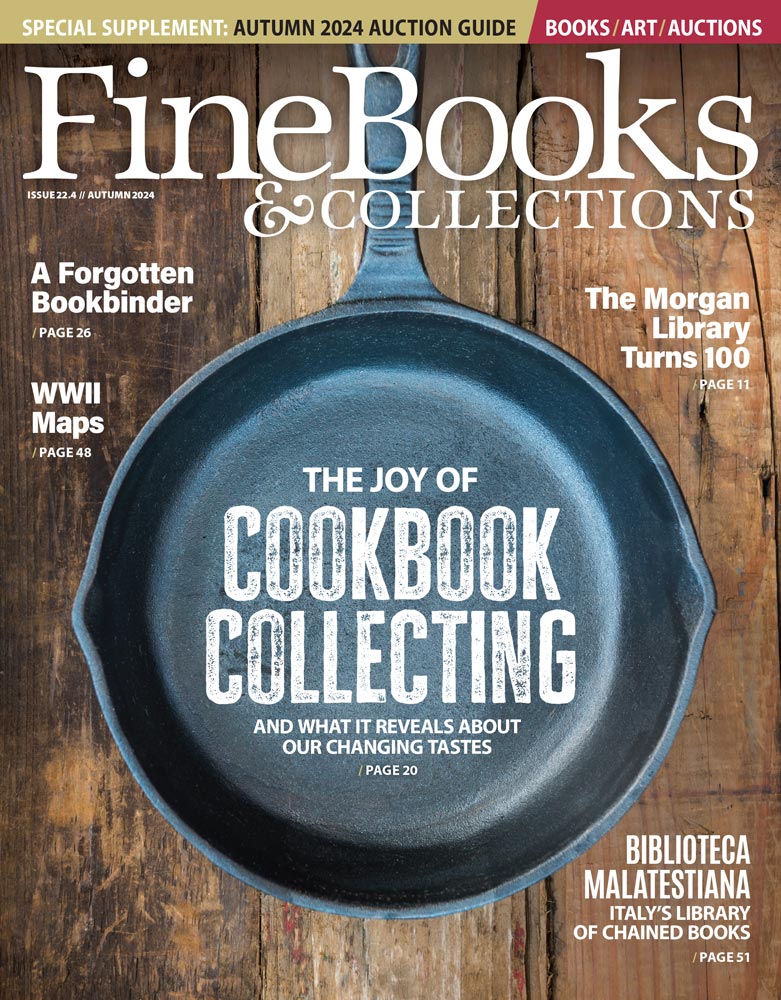Our Bright Young Collectors series continues today with Andrew Ferguson in Virginia who collects science fiction author R. A. Lafferty.
Where are you from / where do you live?
From the Triangle area of NC; live in Charlottesville, VA.
What do you study at University?
I'm getting my PhD in English at the University of Virginia; I've previously studied Liberal Arts at St. John's College (Annapolis); English at the University of Tulsa; and Science Fiction at the University of Liverpool.
Please introduce us to your book collection. What areas do you collect in?
I collect the works of the science fiction author R.A. Lafferty. While he was quite popular in the 1960s and '70s, he slid into obscurity in the decades that followed, and many of his works exist only in very small print runs from very small presses. In addition to works that are solely his, I try to collect every appearance of his work in anthologies and the like, in all their different instances, including the works in translation--he has a particularly large and active fanbase in Japan, and translators there have been kind enough to send me several volumes.
How many books are in your collection?
At present, about 230 separate items. I have a long, long way to go.
What was the first book you bought for your collection?
A print-on-demand edition of his best short-story collection, Nine Hundred Grandmothers. Oddly, in recent years even that POD edition has become sought-after, because Lafferty's estate pulled all publication agreements prior to selling his literary rights to the Locus Foundation. The only book currently in print is his remarkable novel Okla Hannali, available from the University of Oklahoma Press.
How about the most recent book?
I just picked up the first appearance of his horror story "Berryhill," which was in the semipro magazine Whispers, edited by Stuart David Schiff. As a special bonus, I was able to purchase it from Mr. Schiff himself, at the recent World Fantasy Convention where he was a Guest of Honor.
And your favorite book in your collection?
My favorite book is a two-volume set of Samuel Pepys' diary from Lafferty's personal library, processed in his own idiosyncratic way: he would tape contact paper along the spine and rewrite the title and author in large block letters. After his death, his library was dismantled and sold piecemeal; anybody with information about any of these books is encouraged to pass it on to the good folks at
http://www.ralafferty.org/library/.
Best bargain you've found?
At present prices, likely my copy of Lafferty's novel Archipelago, which was written in the late Fifties then recast a number of times over the decades until finally getting published in 1979 by Rick Norwood's Manuscript Press, which was founded to get unpublished works by major authors into print. I picked up my copy for maybe $35 a decade back; it's difficult to find one much under $200 today.
How about The One that Got Away?
No single one more than any other, though many of the small-press Lafferty publications that I have as signed, numbered copies were also issued as lettered, leather-bound presentation copies; I've had the opportunity to acquire several of these, but never quite yet the resources.
What would be the Holy Grail for your collection?
The Holy Grail would be a manuscript for one of his many unpublished works--at last count 13 novels and 40 short stories. I've read the copies of all of these that are held in his University of Tulsa archive, but the actual typed drafts for most of them are still extent, though not likely to change hands any time soon.
Who is your favorite bookseller / bookstore?
I'm a sucker for any bookstore with yard after yard of groaning shelves, but a particular favorite is Reed Books and Museum of Fond Memories in downtown Birmingham, AL. It's packed to the rafters with books, of course, but also with a dizzying accretion of memorabilia, so that every surface offers a potential plunge into nostalgic reverie.
What would you collect if you didn't collect books?
I already have tens of thousands of hours of live concert recordings, but that's a pretty inexpensive collection, requiring only the cost of hard drive space. So if it weren't for books, I'd probably throw my resources into collecting videogames, especially on cartridge.



















